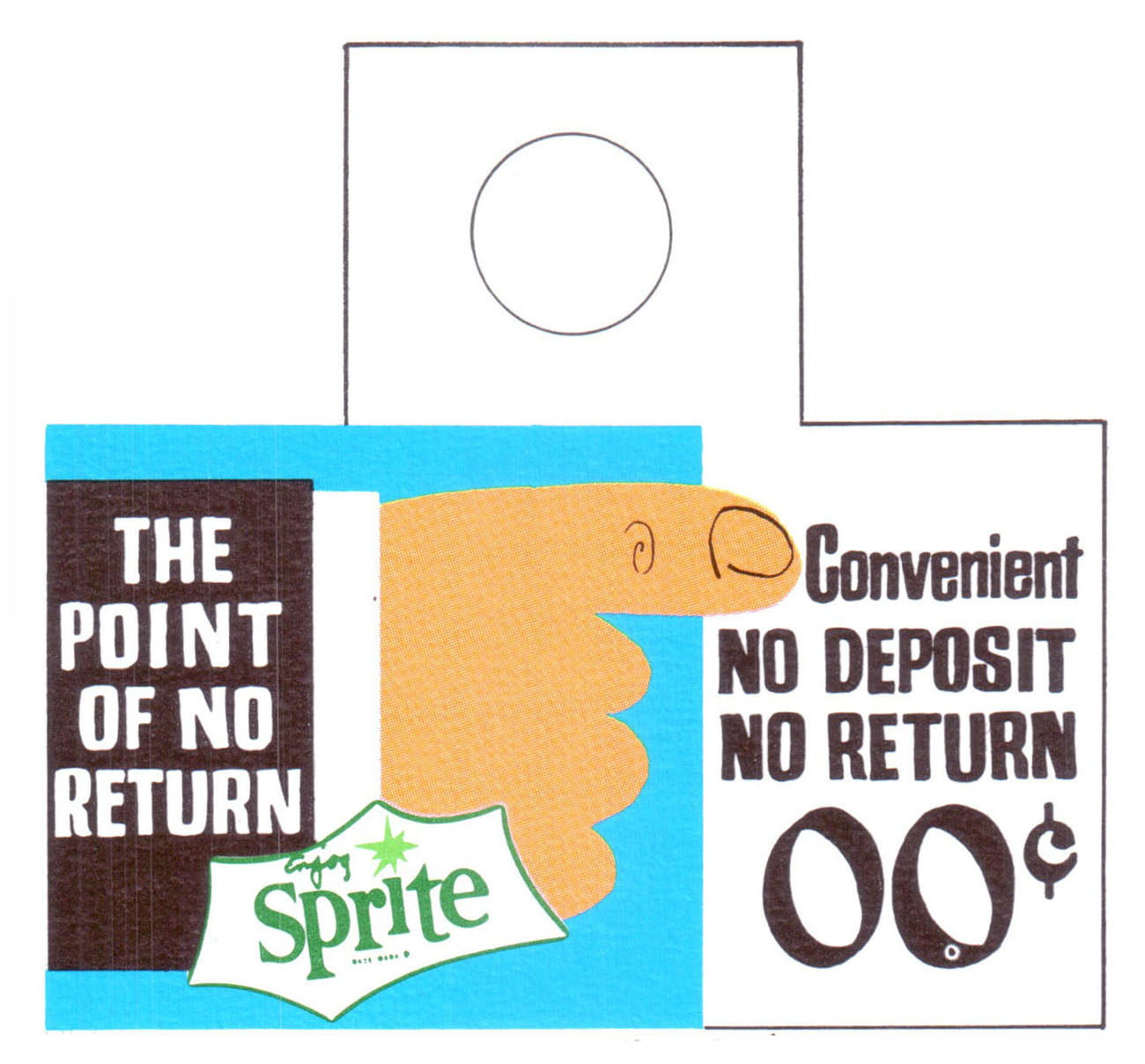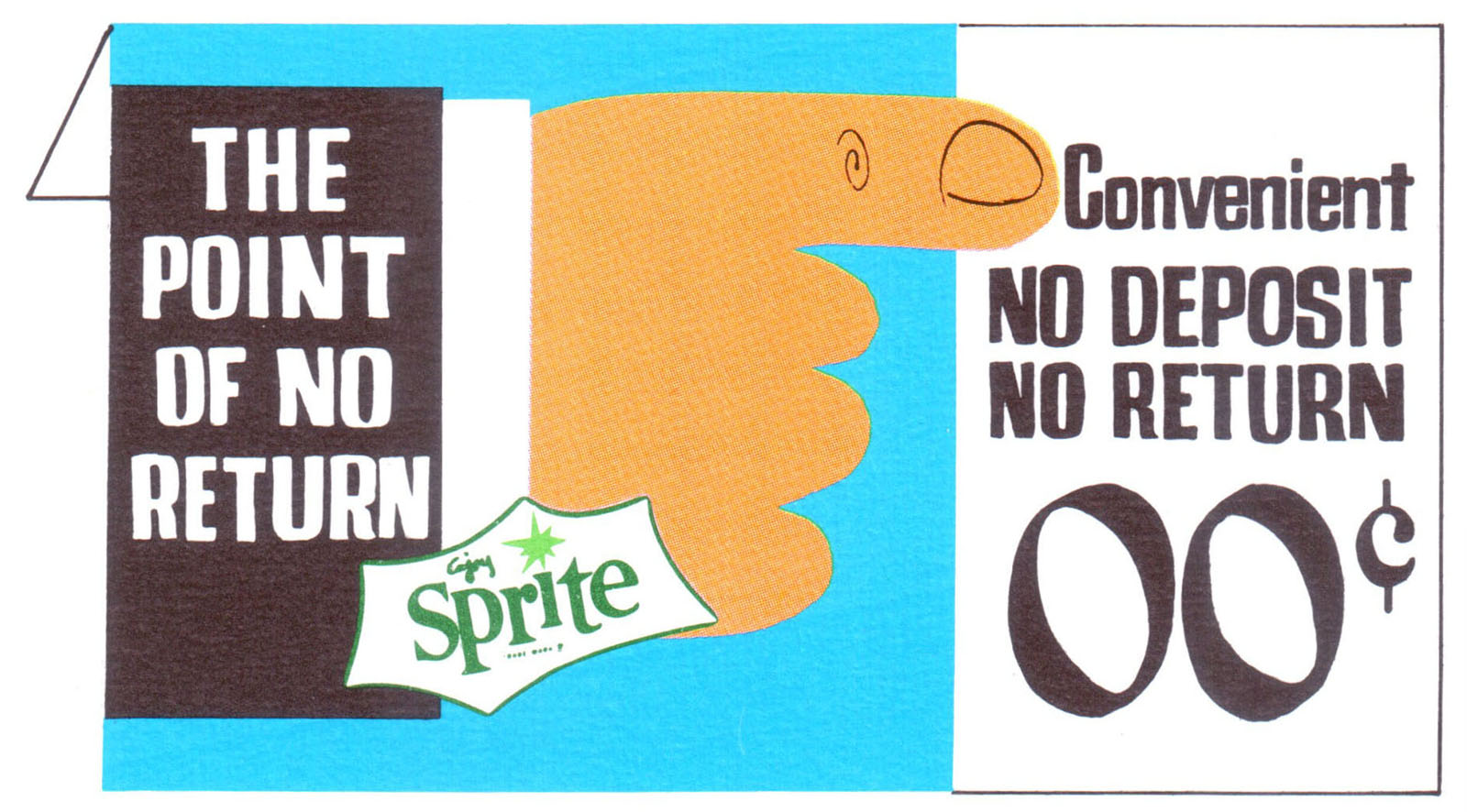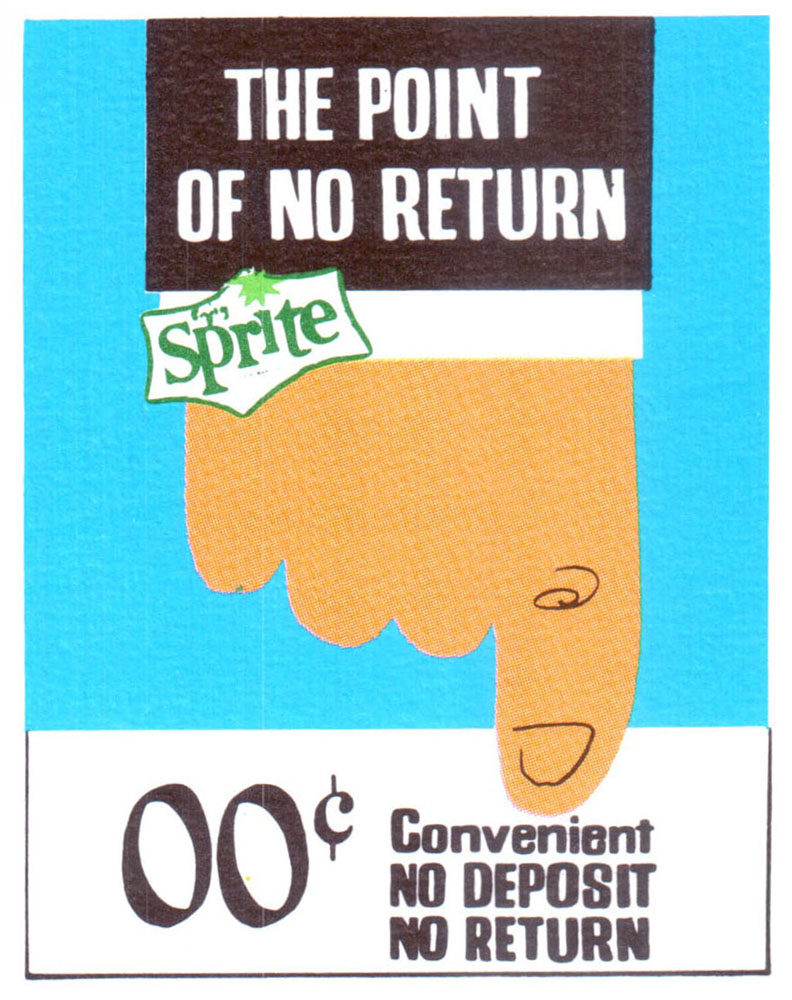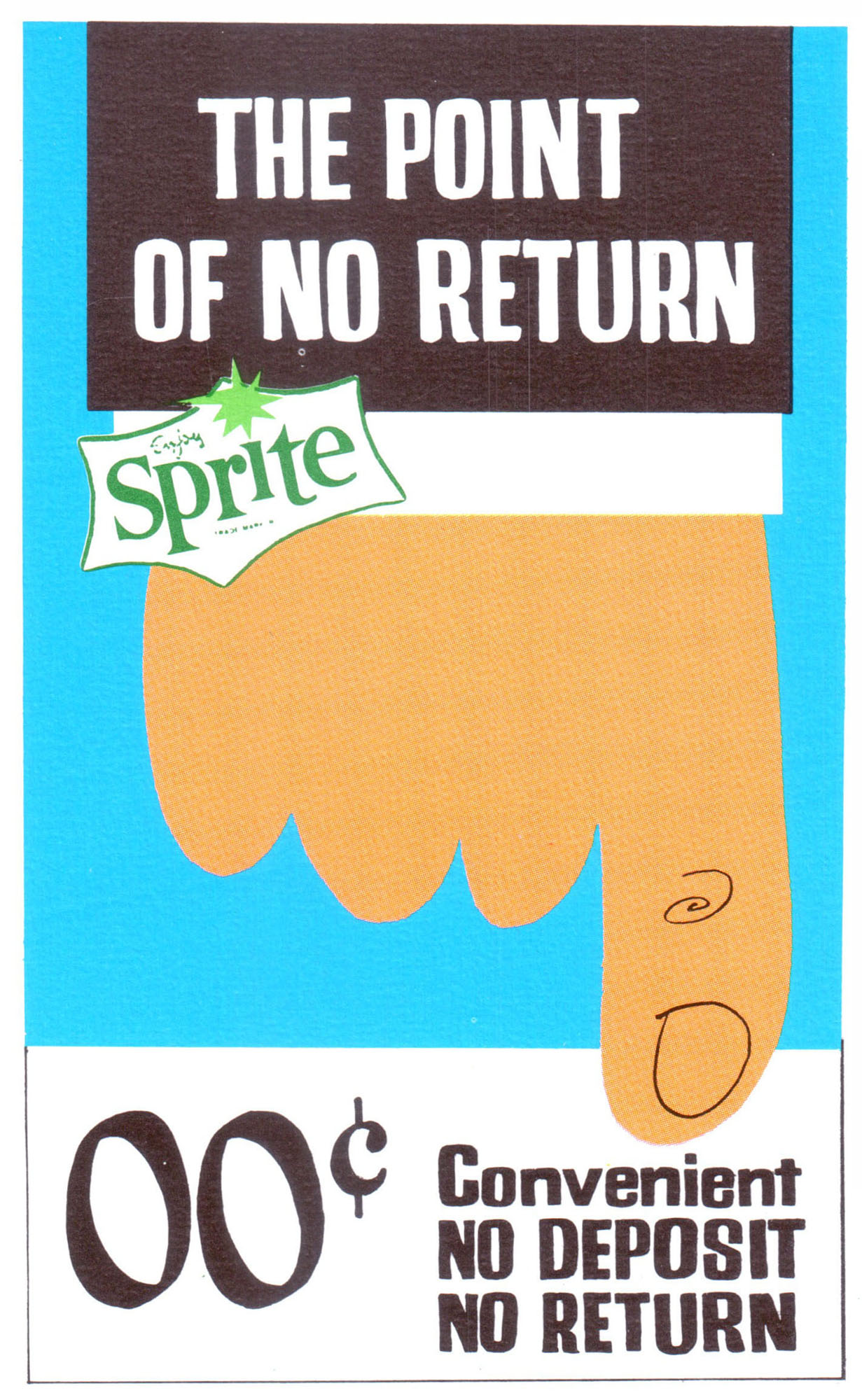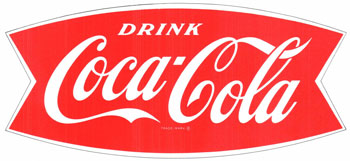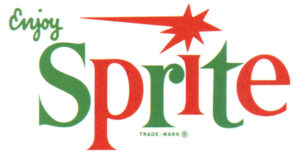As restaurants sought to enhance their customer experience, they turned to vintage Coca-Cola menu boards to capture the essence of this iconic brand. The 1970s were a golden age for American diners. Stainless steel counters, jukeboxes humming Fleetwood Mac, and families gathering around orange vinyl booths defined an era. But a quiet revolution was happening on the walls of these establishments, led by Coca-Cola. Enter the Marketeer Menu Boards, Coca-Cola’s mid-1970s innovation that promised versatility, style, and increased sales for restaurants of all sizes and transformed diner menus forever.
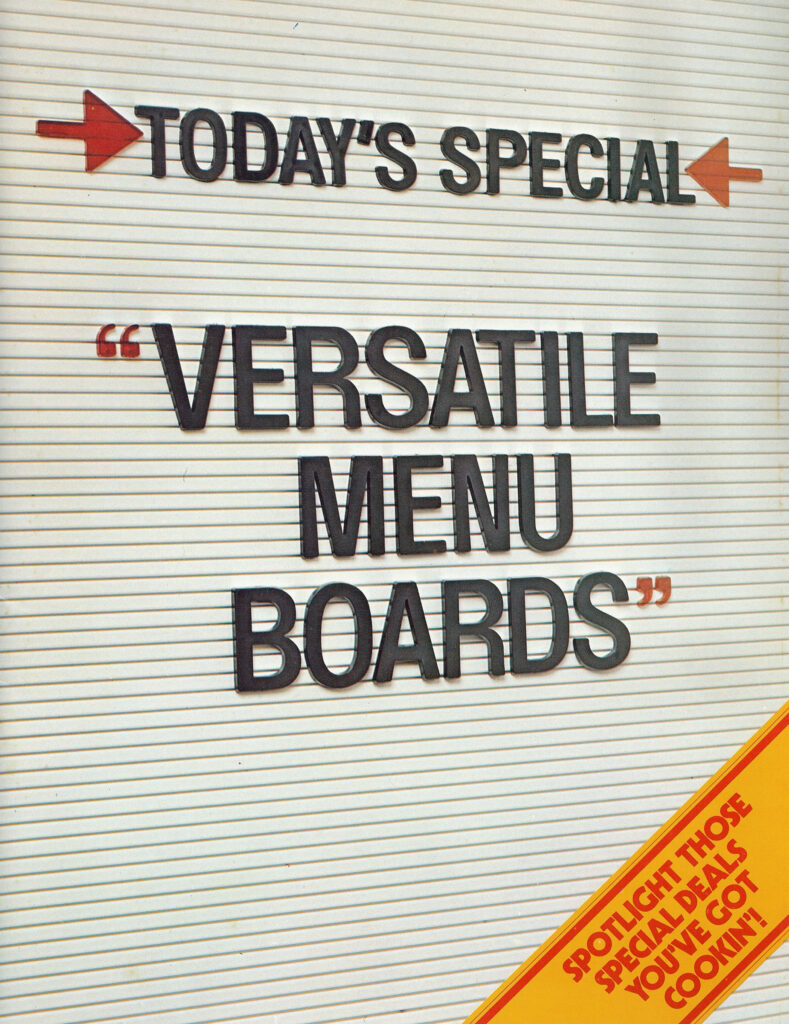
Table of Contents
- 1 Today’s Special: Versatile Menu Boards
- 2 The Shape of Things to Come
- 3 Customized Boards to Reflect Personality
- 4 Quick Promotions, Big Returns
- 5 Pictorial Inserts: Selling the Meal With the Drink
- 6 A Cultural Snapshot: Diners and Drive-Ins in the 1970s
- 7 Why the Mid-to-Late 1970s?
- 8 Legacy of the Marketeer Menu Boards
- 9 Final Reflection: Today’s Special Forever
- 10 Learn More About the Company Brand Featured in this Promotion
Today’s Special: Versatile Menu Boards
Coca-Cola’s trade catalog from the era proudly declared:
“Today’s Special: Versatile Menu Boards”
These were more than just static signs. Designed with interchangeable panels and crisp typography, they allowed restaurateurs to update menus daily, without needing a new board.
The Shape of Things to Come
Illustrations in the catalog showed families enjoying burgers and fries under gleaming white menu boards with prices like:
- Jumbo Burger – 90¢
- Cheeseburger – $1.10
- French Fries – 30¢
The Coca-Cola logo, in its bold red script, anchored every board, linking quality beverages to hearty meals.
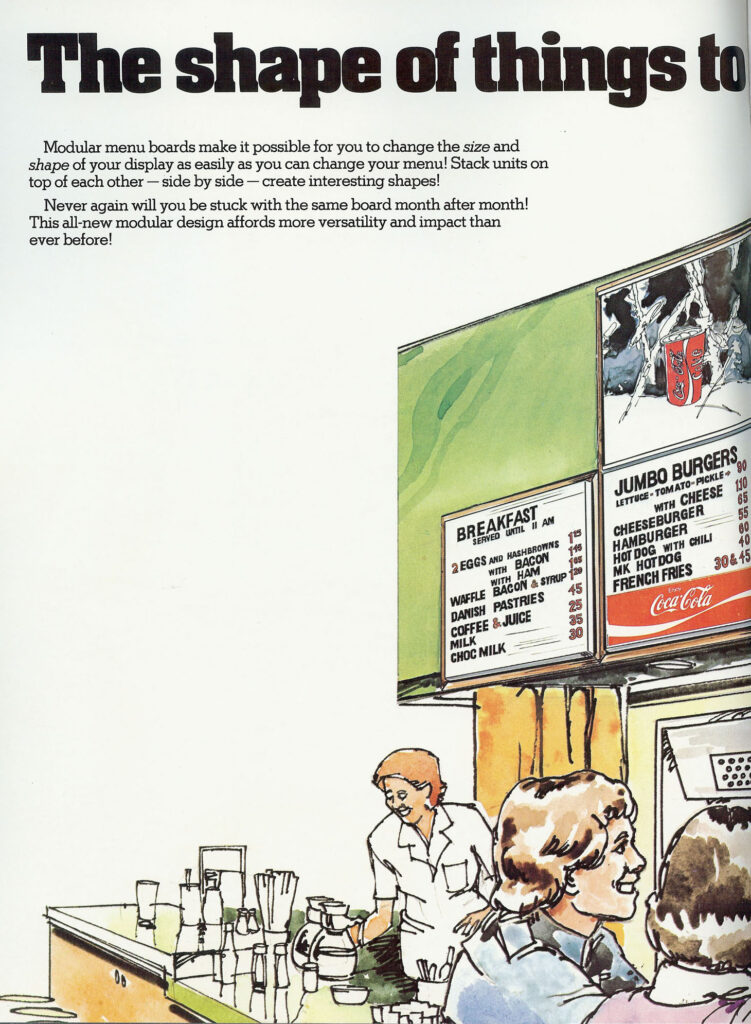
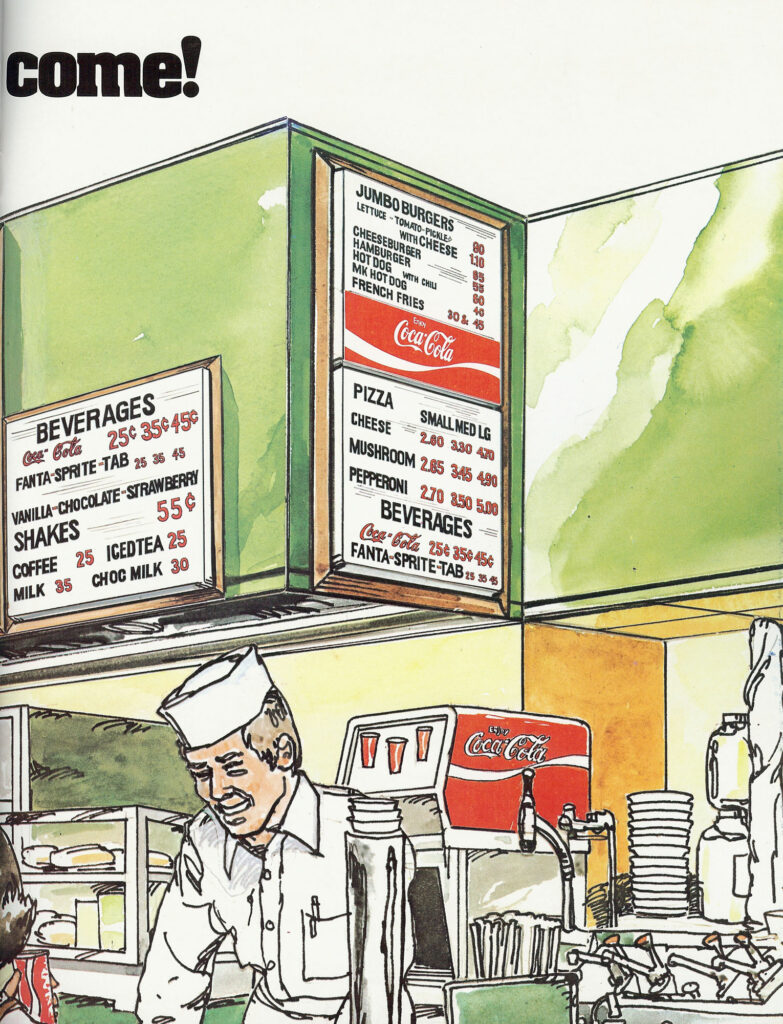
Customized Boards to Reflect Personality
Themed frames gave eateries personality:
- 🐮 Cow-shaped boards for steakhouses
- 🏖️ Lighthouse motifs for coastal diners
- 🎓 Graduation caps for college cafés
- 🤠 Covered wagons for western BBQ joints
These designs weren’t just functional, they were marketing tools.
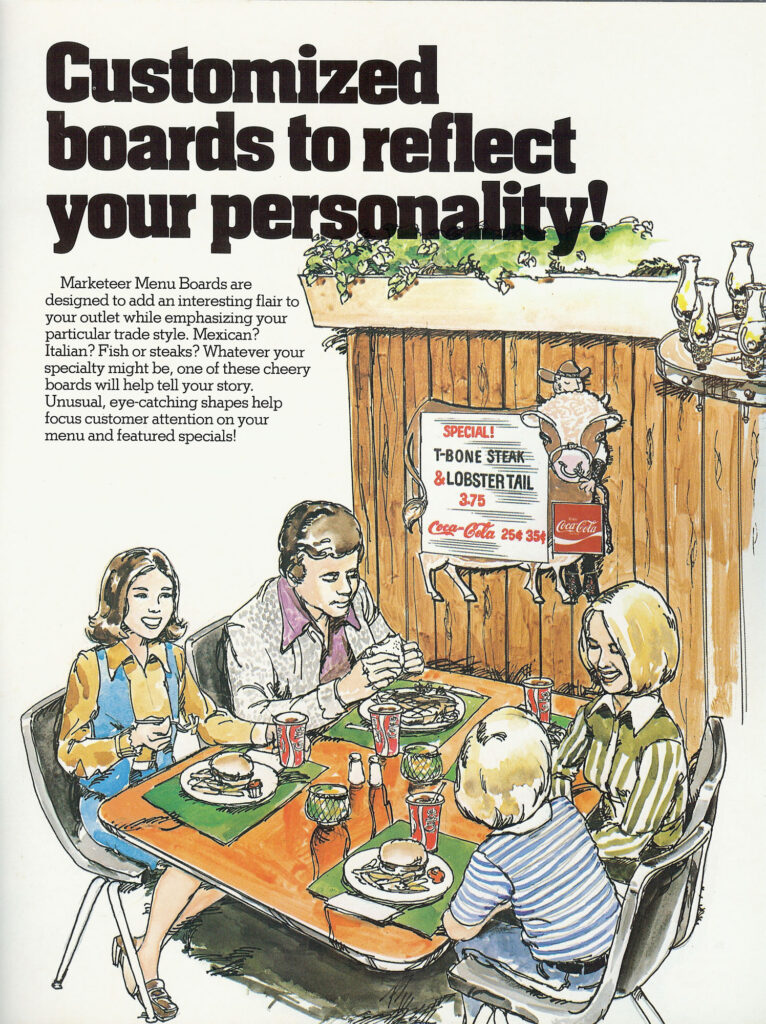
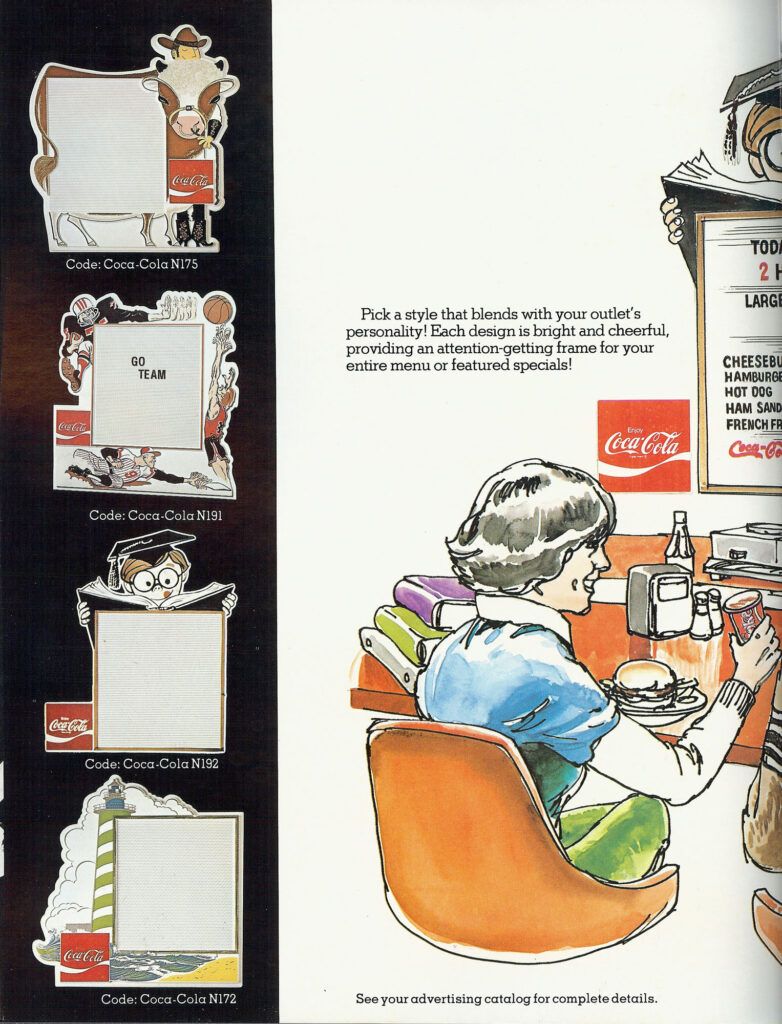
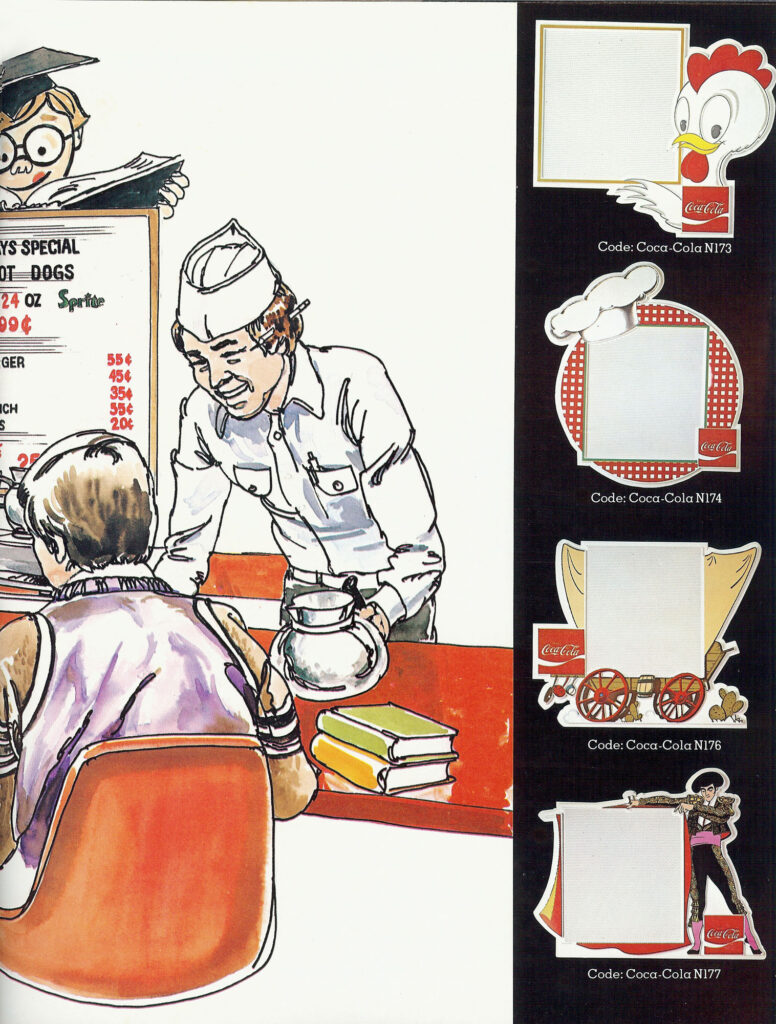
Quick Promotions, Big Returns
With tear-sheet boards and grease-pencil inserts, specials could be written and erased daily. A few of the combos featured:
- 🍗 Fried Chicken & Coke
- 🌮 Tacos & Coke
- 🍔 Patty Melt & Coke
Coca-Cola wasn’t just selling soda; they were selling higher margins and a branded experience.
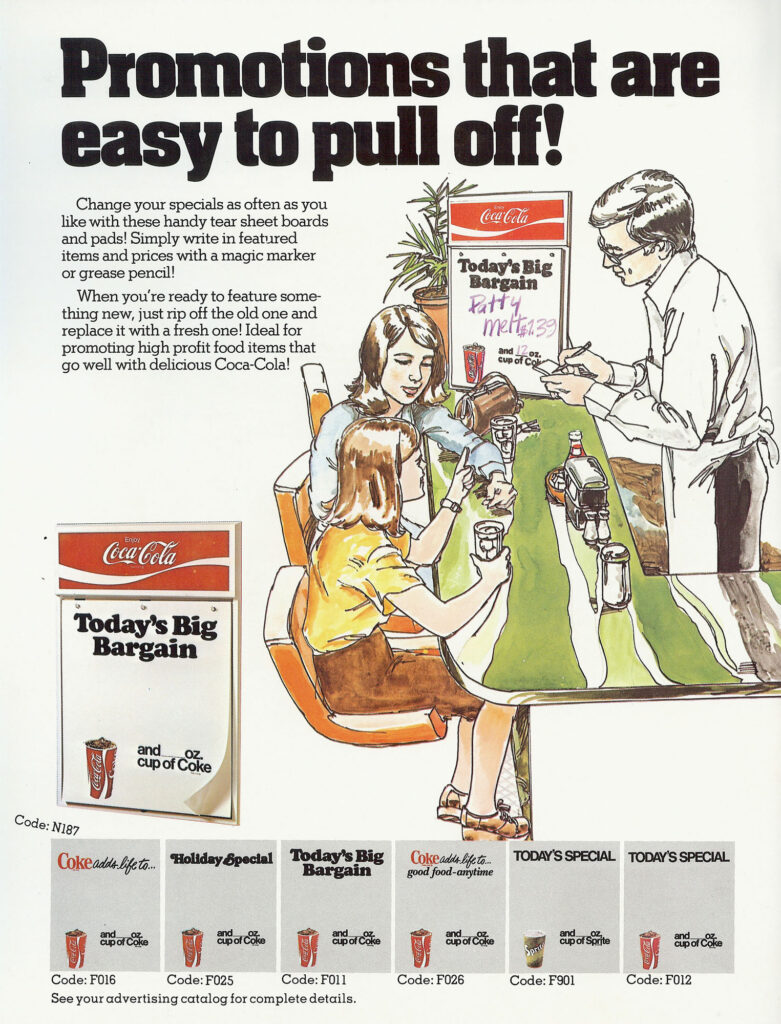
Pictorial Inserts: Selling the Meal With the Drink
High-quality photo inserts showed:
- Golden fried chicken next to an ice-cold Coke.
- Pepperoni pizza paired with Coca-Cola.
- Burgers, fries, and paper Coke cups under bright diner lights.
These inserts helped even small diners look as professional as rising fast-food chains.
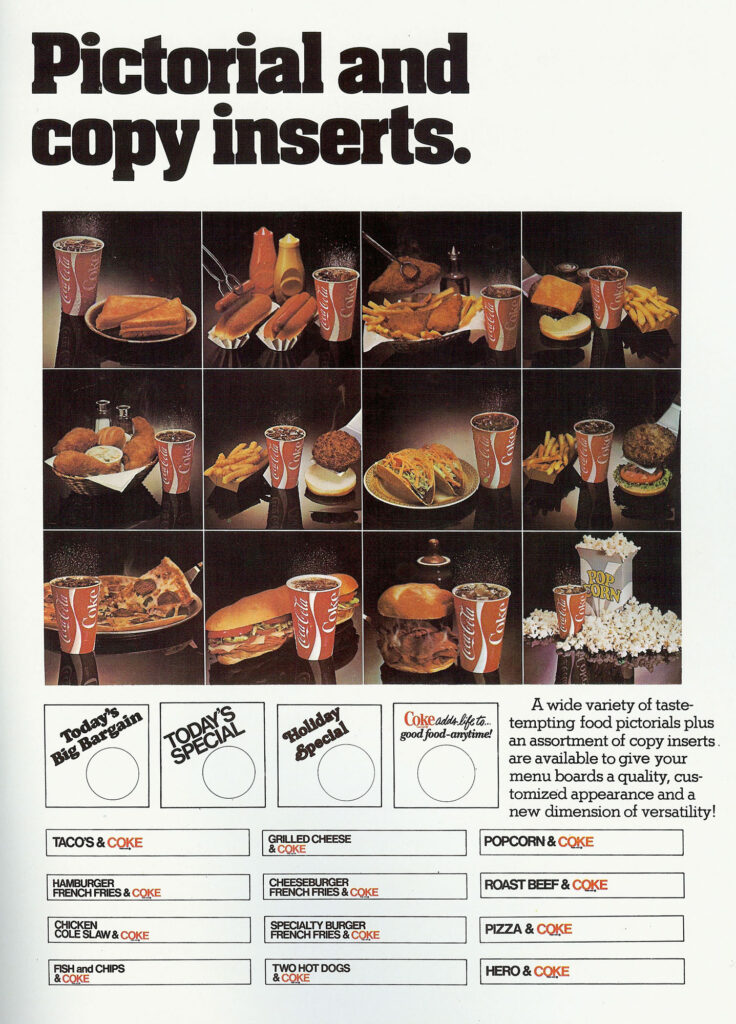
A Cultural Snapshot: Diners and Drive-Ins in the 1970s
Molded chairs, chrome soda fountains, paper hats, these visuals captured more than menus. They documented an era of community, affordability, and Americana, where a family meal out cost under $5.
Why the Mid-to-Late 1970s?
“Coke adds life” slogan debuted in 1976.
- TAB and Fanta branding mirror Coca-Cola’s 70s product lineup.
- Prices match pre-inflation dining costs.
- Soft watercolor illustrations echo 1970s advertising styles.
By 1982, digital menus and Diet Coke would usher in a new era. But in these pages, Coca-Cola reigned supreme.
Legacy of the Marketeer Menu Boards
Today, surviving examples of these boards are rare collectibles. Yet their influence lives on in digital menu systems and co-branded promotions worldwide.
Final Reflection: Today’s Special Forever
The Marketeer Menu Boards remind us of an age where even the simplest diner could feel modern, professional, and enticing, thanks to Coca-Cola.
“Today’s Special isn’t just on the plate, it’s on the wall, sparking cravings and sealing the deal with a Coca-Cola.”
Learn More About the Company Brand Featured in this Promotion
In July of 1968, The Coca-Cola Company introduced a promotion called “The Point of No Return” to attract outlets to increase sales of Sprite by offering them a convenience package message. The promotion appeared as part of the inside advertising promotions for the summer in the 1968 Advertising Price List.
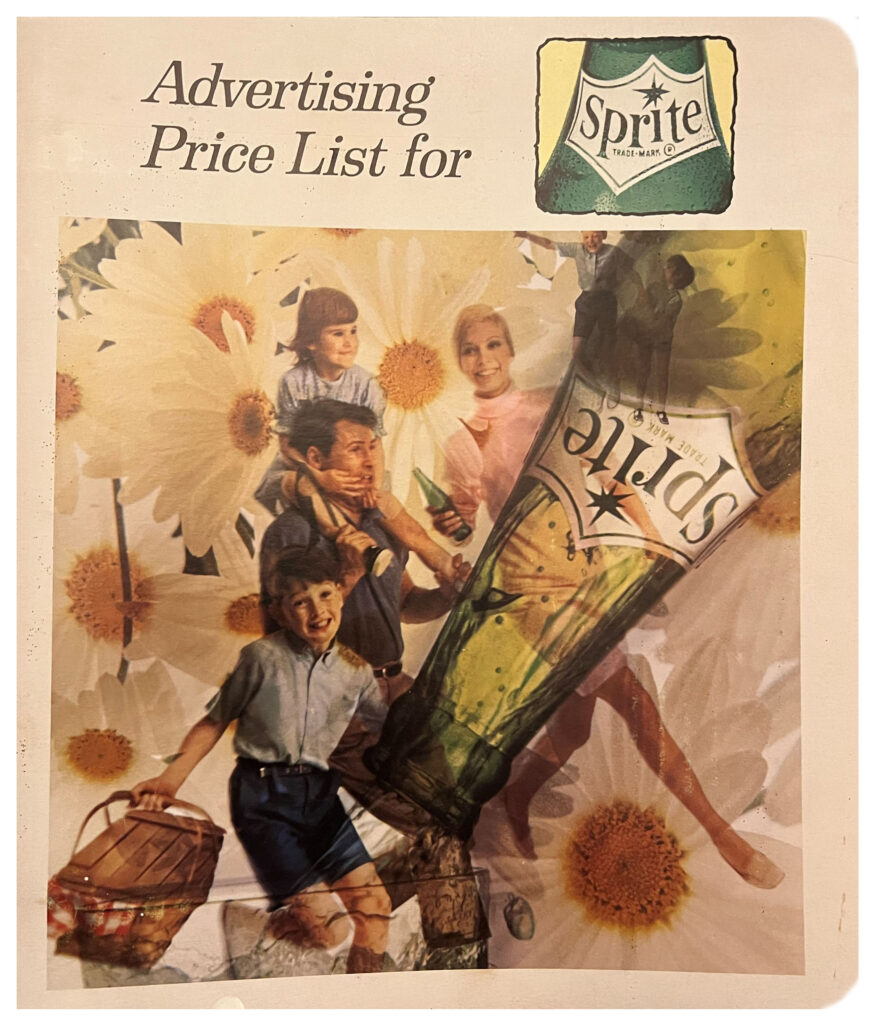
This summer, enjoy the refreshing taste of Sprite, perfect for any occasion!
Table of Contents
Enjoy Sprite: It’s a Natural Refreshment!
The promotion featured a finger pointing in different directions over a blue background towards no deposit no return bottles and offered 4 different types of sales aids. The outlet could then write in their own pricing for each of the sales aids.

Types of Products Featured in this Promotion
This promotion featured 5 different types of sales aids (1 display sheet, 2 display cards, a shelf talker, and a carton hanger).
A shelf talker is a promotional tool used in retail environments, typically found in supermarkets, bookstores, or other retail outlets. It is a small sign or label attached to the edge of a shelf, usually near the product it promotes. Shelf talkers are designed to catch the attention of shoppers and provide additional information about the product, such as its benefits, special features, or promotional pricing. They often include eye-catching graphics, persuasive language, and sometimes customer reviews or endorsements to encourage purchases. Shelf talkers are effective in influencing consumer decisions at the point of purchase by highlighting key selling points directly where the product is displayed.
A carton hanger is a marketing and promotional tool used in retail environments, especially in supermarkets and stores where products are displayed on shelves. It is typically a cardboard or plastic piece that hangs from the edge of a shelf or a pegboard display, designed to hold and display a product’s packaging (carton) in a prominent position.
A display card is a promotional or informational tool used in retail settings to showcase products effectively. It typically consists of a sturdy piece of cardboard or paper, designed to be placed near or on a product display. Display cards can vary in size and shape but are generally larger than shelf talkers or carton hangers.
A display sheet is a promotional tool that provides details about a product or service, including pricing, features, benefits, and promotional messages. It is placed near the product to attract customer attention and inform potential buyers
Products Featured in this Promotion
The promotion was marketed as a way to offer a new twist to the convenience package message through a colorful point-of-sale blue background. The promotion specifics offered:
